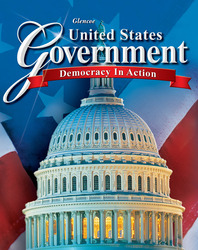
United States Government: Democracy in ActionChapter 10: The Federal BureaucracyChapter Overviews[logo] Essential Question Section 1 Bureaucratic Organization The federal bureaucracy also includes more than 100 independent organizations that are not part of the departments. Examples of independent agencies include the Social Security Administration, the National Aeronautics and Space Administration, and the Central Intelligence Agency. Some independent agencies are government corporations, such as the Tennessee Valley Authority. To keep regulatory commissions impartial, they are independent of all three branches of government. Regulatory commissioners do not report to the president. Commissions make rules for industries and businesses that affect the public. They also regulate the conduct of these businesses. Lobbyists often pressure regulatory agencies, and critics cite the "revolving door" between businesses and the commissions that regulate them. Section 2 The Civil Service System The spoils system fostered inefficiency and corruption. After President James A. Garfield was shot and killed by a man expecting political favors, Congress passed the Pendleton Act, which created the Civil Service Commission. Today the Office of Personnel Management handles recruitment, pay, and exams for federal workers. Government jobs are attractive because of the many benefits they offer. Federal workers cannot engage in political activities during work hours, however. About 10 percent of the jobs in the executive branch are outside the civil service system and instead filled by presidential appointees, such as the cabinet secretaries, agency heads, and ambassadors to foreign countries. Section 3 The Bureaucracy at Work The federal bureaucracy has grown because the nation's population has grown. International crises and economic problems at home also lead to an increase the size of the bureaucracy. Citizens' and interest groups' demands for action often result in a new agency being formed. Congress's major power over the bureaucracy is its control over each agency's budget. Congressional committees, client or interest groups, and federal agencies often form an iron triangle when creating public policy. Critics believe that iron triangles allow interest groups undue influence outside the control of the executive branch. |  |















